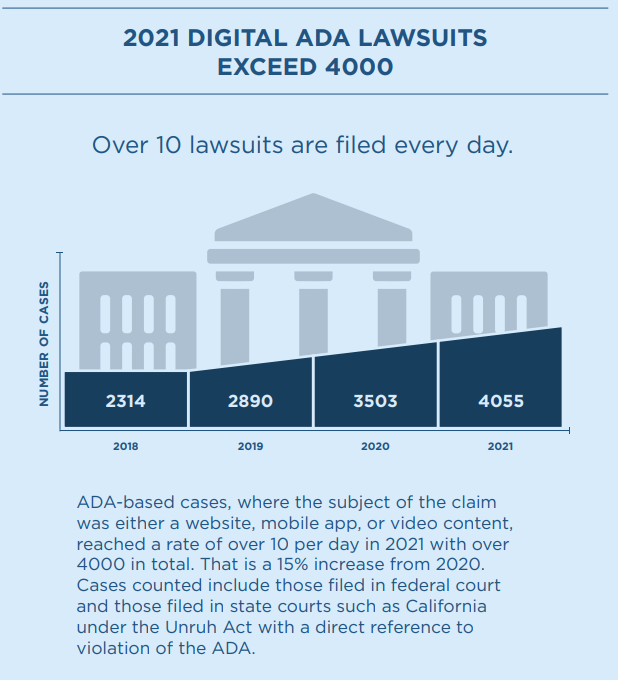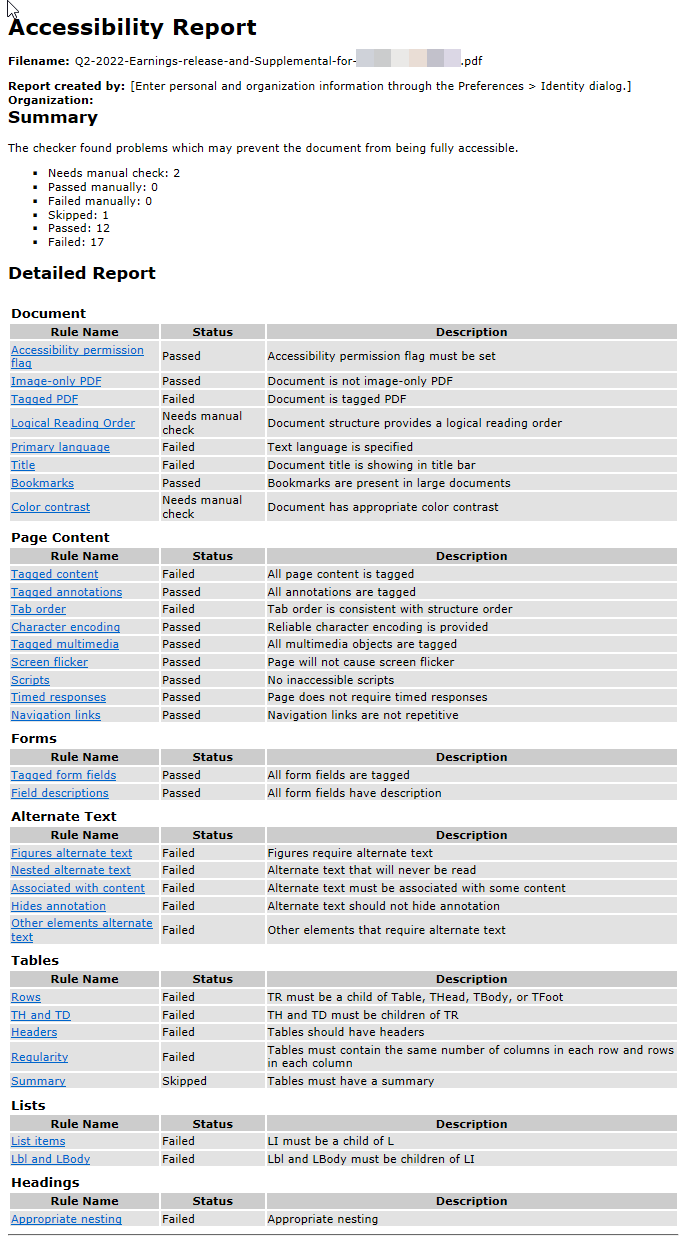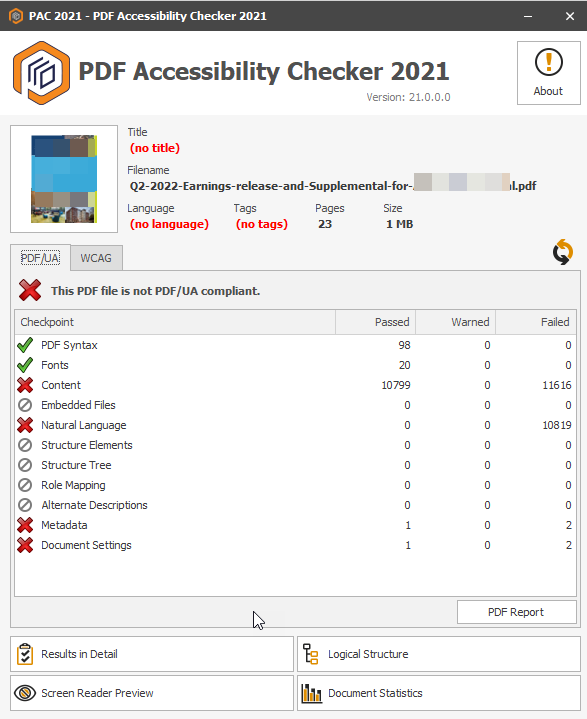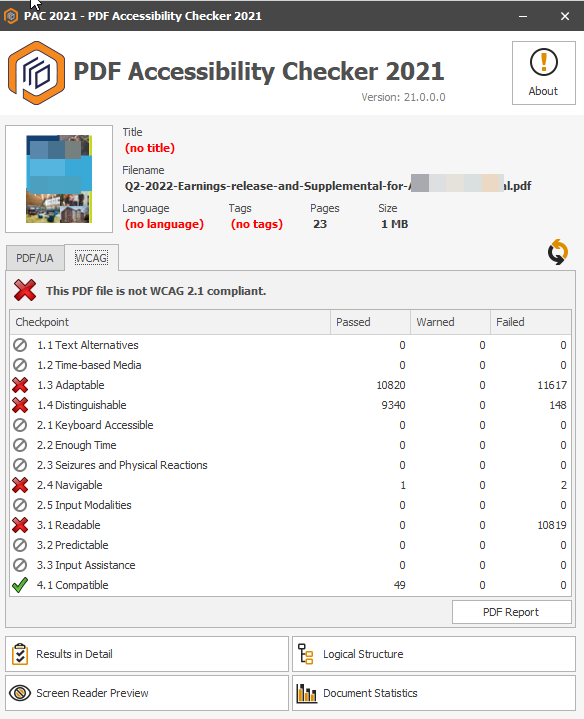Uncovering the Hidden Importance of Accessibility in Corporate PDFs: Why Your Company Can’t Afford to Ignore WCAG and Section 508 Compliance
Accessibility in PDFs is an often overlooked aspect of corporate communication, but it is crucial for ensuring that all users, regardless of ability or disability, are able to access important information. In this blog, we will discuss the importance of accessibility in PDFs, as well as the standards that ensure that these documents are accessible to everyone.
First, let’s define what we mean by “accessibility” in the context of PDFs. Essentially, an accessible PDF is one that can be easily read and understood by users with disabilities, such as those who are blind or visually impaired, deaf or hard of hearing, or have mobility impairments. This can be achieved through the use of features such as alternative text for images, properly formatted headings and lists, and the use of clear and concise language.
But why is accessibility in PDFs important, especially for enterprise investor relations executives of publicly traded companies? There are several reasons:
Why is accessibility in PDFs important
- Legal requirements: In the United States, the Americans with Disabilities Act (ADA) requires that all public-facing websites and documents be accessible to users with disabilities. This includes PDFs that are hosted on or linked from these websites. Failure to comply with these requirements can result in costly legal action.
- Improved user experience: By making your PDFs accessible, you ensure that all users, regardless of ability, can access and understand the information contained within. This leads to a better user experience for everyone, and can improve customer satisfaction and loyalty.
- Increased reach and engagement: By making your PDFs accessible, you open them up to a wider audience, including users with disabilities. This can lead to increased reach and engagement with your content, as well as a positive impact on your brand reputation.

source: https://f.hubspotusercontent30.net/hubfs/3280432/Remediated-2021-Year-End-Report-FINAL.pdf
How do you ensure that your PDFs are accessible?
So, how do you ensure that your PDFs are accessible? There are two main standards that you should be aware of: the Web Content Accessibility Guidelines (WCAG) and Section 508 compliance.
WCAG is a set of guidelines developed by the World Wide Web Consortium (W3C) to ensure that web content is accessible to all users, including those with disabilities. WCAG 2.1 is the most current version, and it outlines four principles for accessibility: perceivable, operable, understandable, and robust. These principles cover a wide range of accessibility issues, including the use of alternative text for images, proper formatting for headings and lists, and the use of clear and concise language.
Section 508 is a specific set of guidelines that apply to electronic and information technology (EIT) used by the federal government. These guidelines ensure that EIT is accessible to users with disabilities, and they are based on the WCAG 2.0 guidelines.
While both WCAG and Section 508 compliance are important for ensuring the accessibility of web content, they are often overlooked when it comes to corporate PDFs. This is likely due to a lack of awareness of the importance of accessibility, as well as a lack of understanding of the standards and how to implement them.
However, it is crucial that enterprise investor relations executives of publicly traded companies ensure that their PDFs are accessible. Not only is it the right thing to do, but it is also a legal requirement and can lead to improved user experience, increased reach and engagement, and a positive impact on your brand reputation.
You are probably curious what an audit looks like? there are two main tools we use
- Adobe built in accessibility checker – https://www.adobe.com/accessibility/pdf/pdf-accessibility-overview.html
- PAC – https://pdfua.foundation/en/pdf-accessibility-checker-pac/
Taking a random IR document from a publicly traded client website we can quicky process it to see these results:
From Adobe:

adobe accessibility report
from PAC

and PAC WCAG

In conclusion, accessibility in PDFs is an important but often overlooked aspect of corporate communication. By ensuring that your PDFs are compliant with WCAG and Section 508 guidelines, you can ensure that all users, regardless of ability, can access and understand the information contained within. This is important for legal compliance, as well as for improving user experience, increasing reach and engagement, and protecting your brand reputation.
The good news is that we can help. If you would like to learn more about accessibility in PDFs and how to ensure that your documents are compliant with WCAG 2.1 and Section 508 standards, just let us know. We recommend starting with an audit of your most recent communications to assess the current state and then set a plan for roping in our team to figure publishing workflows. Send us a couple of your PDFs and we will deliver a free analysis of what we have discovered.

